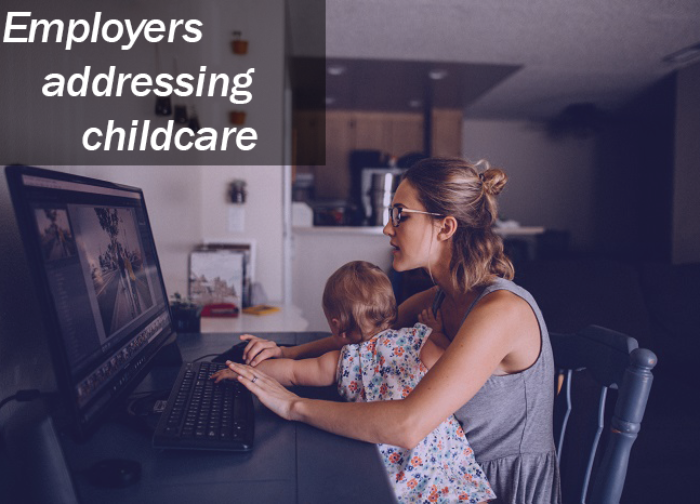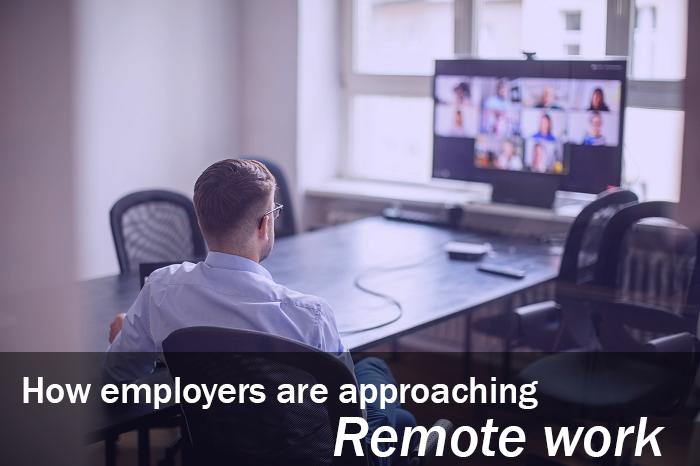Employees are refusing to take time off. What’s the worry? More than one in 10 employees (13%) say they won’t take time off work until the pandemic is over, presenting a significant challenge for employers as they witness soaring rates of employee burnout and depression. The new data from software firm Zapier finds that hesitation to take time off may be fueled by a few concerns. Read more here.
KPMG enhances benefits to support working parents during COVID-19: Professional services firm KPMG is joining a growing number of employers beefing up benefits to help support working parents in trying times. The company is turning to new and enhanced programs to help its employees who are balancing work and family responsibilities, particularly as the new school year begins with virtual and hybrid learning models. Among those benefits are increased backup care, an expanded network of childcare centers, and access to discounted tutoring, academic support and homework assistance. Read more here.
Workers aren’t getting screened for depression–and it’s costing employers: Although depression risk is soaring for employees, the vast majority aren’t getting the screening and care they need–and it’s costing employers big time. New research from the Integrated Benefits Institute finds that proper screening for depression, as well as some cancers and chronic conditions such as hypertension, diabetes and obesity, is lagging among employees. Not only is that dangerous, but lack of preventive care also is driving up healthcare and productivity costs for employers. Read more here.
How COVID-19 is aggravating the caregiving crisis: Caregiving was already a significant challenge for employees, and the COVID-19 pandemic is only exacerbating those issues. The closure of schools, daycares and summer camps is making balancing home and work life especially difficult for working parents. Meanwhile, employees caring for elderly relatives or others are facing access challenges as well. HRE spoke with Larry Nisenson, senior vice president and chief commercial officer for insurance firm Genworth, about the caregiving crisis, the effects of the pandemic on caregivers, and what employers should do. Read more here.
3 ways to support the mental health of employees of color: It’s no surprise that, as a result of the COVID-19 pandemic, HR leaders are paying more attention than ever to the subject of mental health. And, with the nationwide protests over the murders of George Floyd, Breonna Taylor and others, there’s a growing recognition of how race and systemic racism can impact the overall mental health of people of color and, in turn, HR programs and policies. Here’s how to support mental health programs for employees of color. Read more here.
This is the biggest benefit trend of COVID-19: At a time of collective grief, uncertainty and anxiety, there is a new spotlight on how employers treat their employees. It’s not just about salary or nice-to-have perks–it’s getting to a deeper, more meaningful level. How do you help them cope? How do you show them you have their back? What resources can you provide? What flexibility? What recognition? What leeway? Read more here.
How COVID-19 will redefine workplace flexibility forever: Before the COVID-19 pandemic, workplace flexibility had gained traction within HR circles, primarily as a workplace incentive to combat the struggle in attracting and retaining talent. Today, the pandemic has transformed flexibility from a desirable perk into a powerful people practice, one that is expected to endure well after COVID-19 is in the rearview mirror, according to recent research from Mercer. Read more here.
What you need to know about the payroll tax suspension: An executive order from President Donald Trump issued last month provides a payroll tax hiatus for U.S. workers starting Aug. 31. However, while a payroll tax suspension undoubtedly will give working Americans a boost in take-home pay, it’s unclear if employers will even go along with the plan due to the confusion in implementing it. Read more here.
Thinking about reopening? 7 considerations for HR: As new COVID cases fall across the United States, many organizations are moving forward with plans for returning employees to the office. Not surprisingly, a return-to-the-workplace plan in the midst of a pandemic isn’t the easiest feat. It requires a ton of prep, safety protocols, logistical considerations and robust communication–responsibilities that often fall on the shoulders of human resources professionals. Should HR leaders bring workers back into the office? What should they consider first? What should they do? HRE spoke to a number of experts for insight. Read more here.




